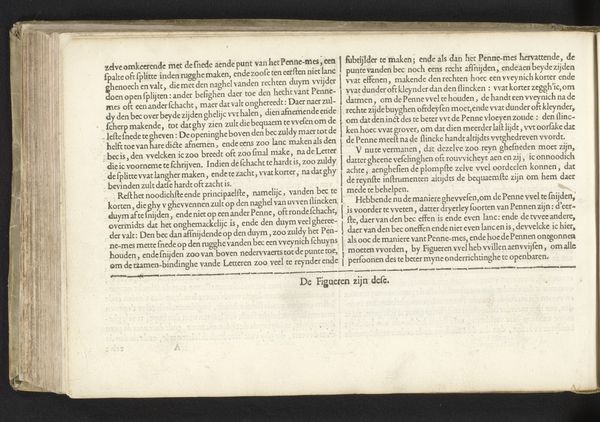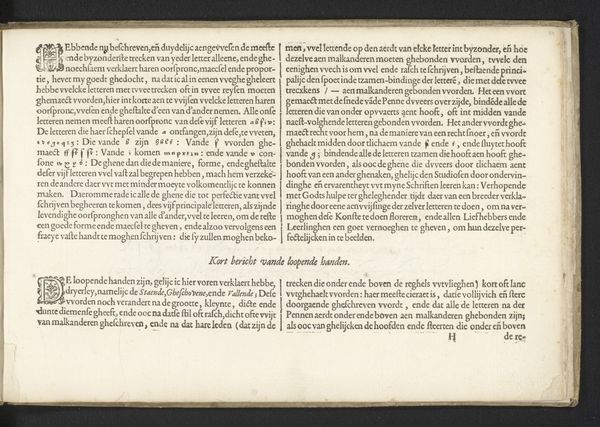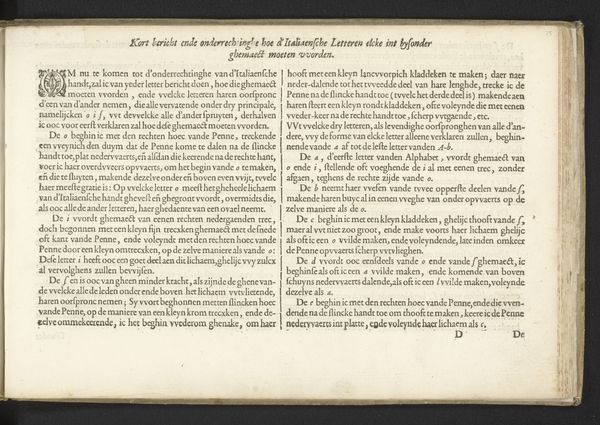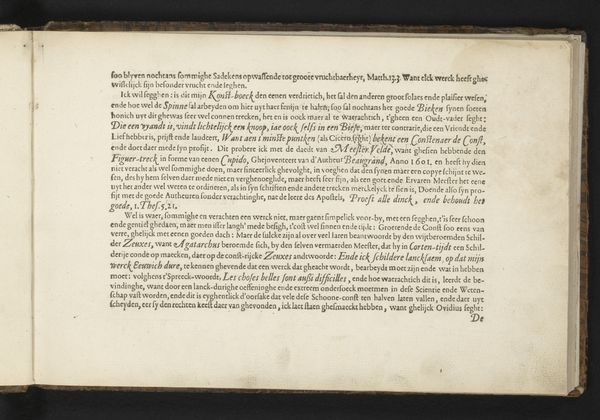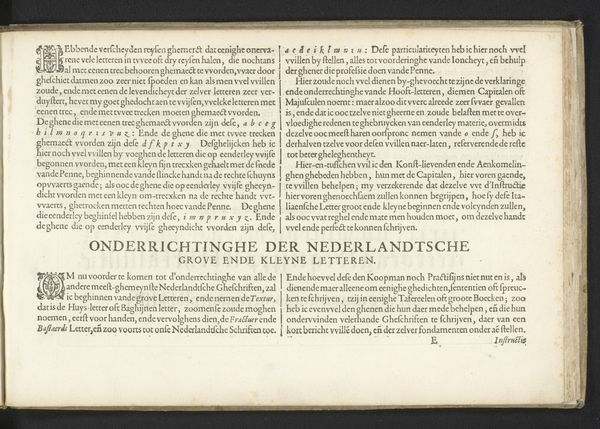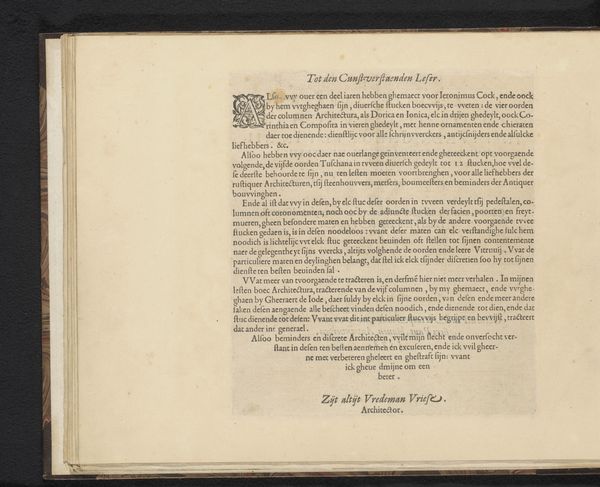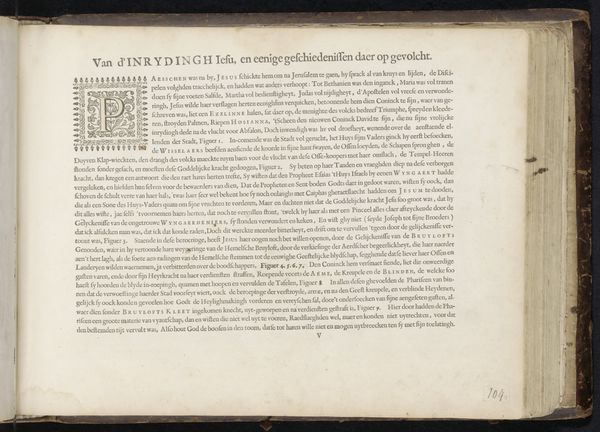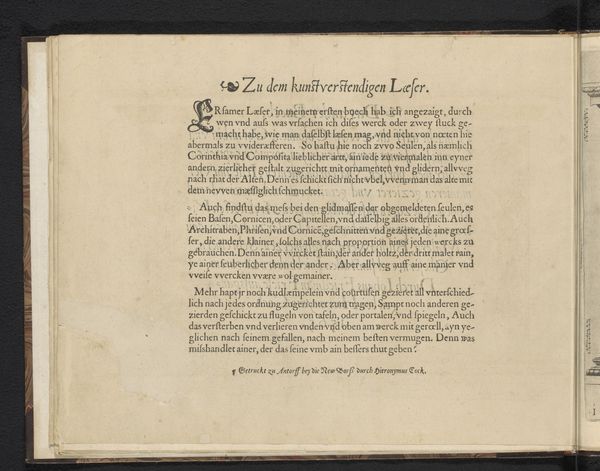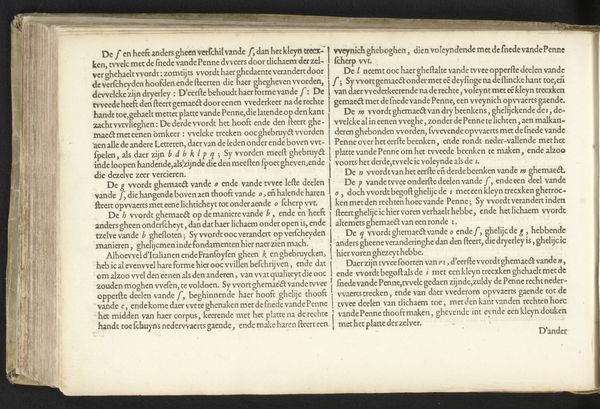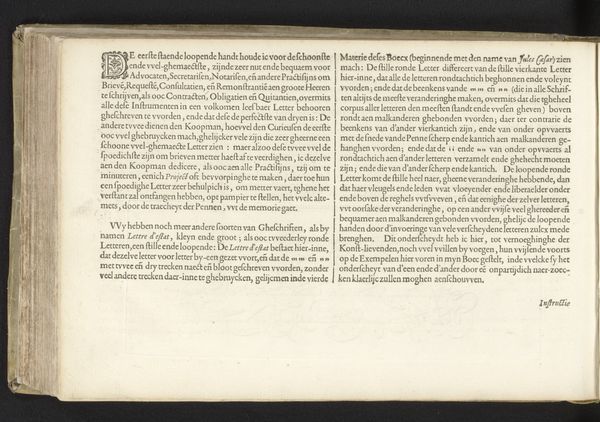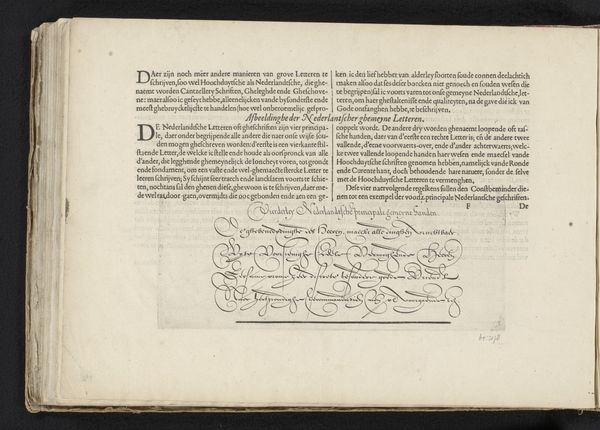
Dedicatie aan Johan van Oldenbarnevelt, pagina 2 van 2 Possibly 1605
0:00
0:00
janvandeveldei
Rijksmuseum
print, paper, engraving
# print
#
paper
#
engraving
Dimensions: height 210 mm, width 315 mm
Copyright: Rijks Museum: Open Domain
Curator: Let's begin by looking at this remarkable print entitled "Dedicatie aan Johan van Oldenbarnevelt, pagina 2 van 2." It’s an engraving on paper by Jan van de Velde I, and believed to have been created around 1605. It’s held in the collection of the Rijksmuseum. Editor: My immediate impression is one of contained power. The dense text, meticulously rendered, gives the sense of a weighty document, official yet deeply personal, all at once. There’s something very grounding in the tight lines. Curator: Absolutely. The act of dedicating a page in print, is always a political and social statement. Jan van de Velde, by aligning his work with Johan van Oldenbarnevelt, situates himself within the sphere of Dutch politics. These printed dedications allowed individuals to signal their allegiances but also to participate in shaping collective memory, particularly when addressed to powerful figures. Editor: The script is undeniably beautiful, almost an icon in itself. The flourishing penmanship suggests an attempt to imbue language with symbolic importance. Look at the way he's stylized MON-SEIGNEVR to underscore not just respect, but deference. I find myself wondering about the weight, the feeling of receiving such a meticulously rendered object. The gesture has such clear intent behind it, preserved in ink and paper. Curator: This dedication functions as a strategic tool for Van de Velde to elevate his reputation and gain favor through art and political commentary. The artist is literally making the subject iconic through the visuality and authority of print. Editor: Indeed. In many cultures, writing has been understood as a conduit to the divine, holding sacred importance. Beyond political maneuvering, could this dedication carry, intentionally or not, an invocation of spiritual favor onto Oldenbarnevelt? And would van Oldenbarnevelt understand that? Curator: Perhaps. It is equally possible that this performative flattery was used to further cement the power of this patriarchal society at the time, reminding the elite about the socio-economic power imbalance between themselves and emerging artists like Jan Van de Velde. Editor: A fascinating dichotomy! These symbols—penmanship, printed word—truly operate on multiple layers, shaped by context, intention, and enduring cultural weight. It seems something as simple as a formal printed dedication could express far more than an homage to power. Curator: Exactly! We can interpret social dynamics, not just by analyzing artistic output but also the intent behind its production.
Comments
No comments
Be the first to comment and join the conversation on the ultimate creative platform.

